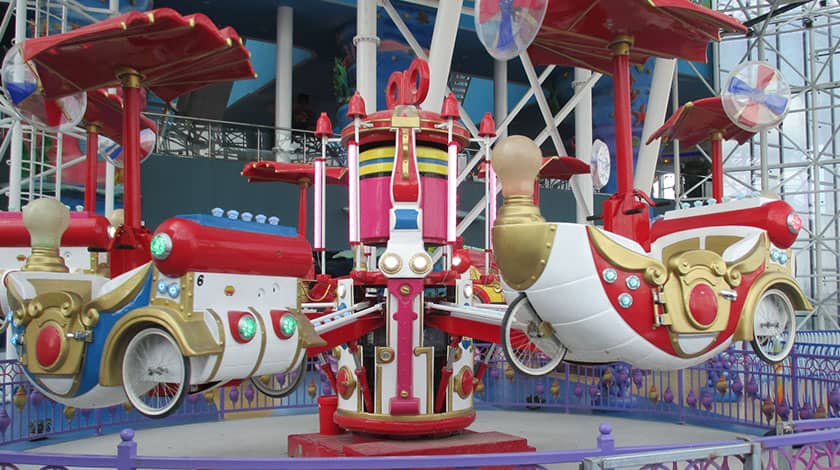Rotor Family Rides

Technical Data
Number of seats
24
Hourly Capacity
720 pph on request
Footprint
8.2x8.50xH5.8m
Speed
30 rpm
Height restrictions
110 cm
Power consumption
on request
Product Key Features
Compact height → ~7.5 meters, ideal for limited spaces.
Magnetic brakes → Smooth and safe deceleration.
Optimized footprint → 3.65 × 3.2 m for maximum versatility.
Customizable experience → Adjustable bounce sequences and speed.
High reliability → Proven technology for continuous operation.
In the late 1940s, German engineer Ernst Hoffmeister conceived one of the boldest and most innovative attractions of the era: the Rotor ride. Showcased at the 1949 Oktoberfest, this groundbreaking attraction featured a large vertical spinning cylinder in which visitors, pressed against the wall, experienced the thrill of being “glued” to it as the floor dropped away beneath them.
At the time, it was described as “one of the craziest attractions ever devised” and it quickly became a favorite. Throughout the 1950s and 1960s, the Rotor traveled across European fairs and even reached Coney Island, New York. In Italy, manufacturers that later merged into Preston & Barbieri embraced the concept early on, producing local versions as early as the 1950s.
Today, Preston & Barbieri continues to offer the Rotor in its catalog, upgrading its materials and safety features while remaining faithful to the original spirit - a fast-spinning cylinder that presses riders against the walls using centrifugal force. This historic ride has transcended time to become a timeless classic in amusement parks.
Technical Features and Operation
From a technical standpoint, the Rotor operates on a simple yet spectacular physical principle. The drum spins at approximately 30 revolutions per minute, generating a strong radial force: the rotating wall exerts a centripetal force (perceived as “centrifugal”) equivalent to nearly 3 g.
This force ensures that passengers remain firmly pressed against the wall, with friction preventing them from falling when the floor lowers mid-ride. As the ride cycle ends, the cylinder gradually slows, allowing riders to gently slide down as gravity takes over. Classic models sometimes featured an observation gallery at the top of the drum, accommodating around 20–30 people per cycle.
Preston & Barbieri’s modern version supports 24 passengers, with a drum standing approximately 6 meters tall and over 8 meters in diameter. Over time, similar attractions have evolved from the original concept: by the 1980s, variations (often with a space-themed design) emerged, making transportation easier for traveling fairs and gradually replacing traditional Rotors in mobile amusement parks.
Today, only a few original Rotor rides remain in operation worldwide, but their legacy lives on in modern descendants - now more visually striking and technologically advanced - as well as in nostalgic memories of an era when centrifugal rides first captivated audiences.


